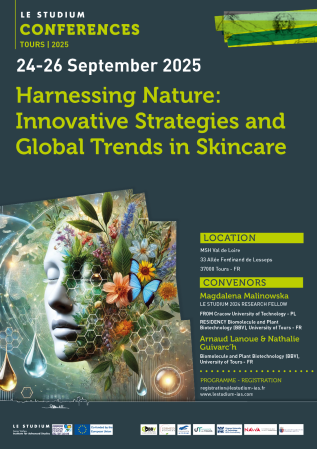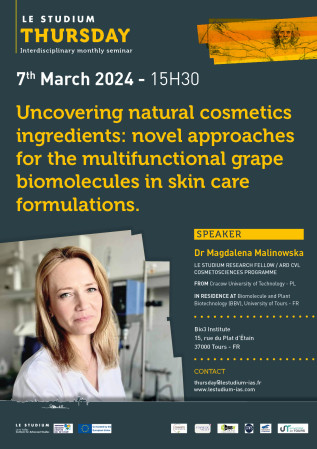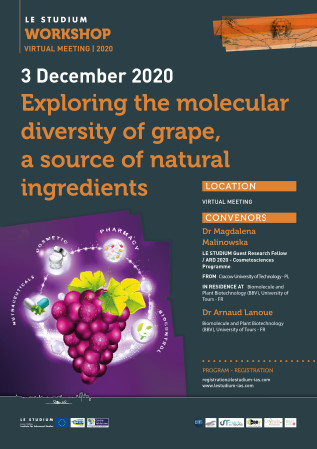Dr Magdalena Malinowska

Établissement d'origine
Université Technologique de Cracovie - PL
Laboratoire d'accueil
Biomolécules et Biotechnologies Végétales (BBV), University of Toorganurs - FR
Hôte Scientifique
Dr Arnaud Lanoue
Projet
Grape Metabolomics & Cell Cosmetics
Publications
Grape canes are waste biomass of viticulture containing bioactive polyphenols valuable in cosmetics. Whereas several studies reported the cosmetic activities of E-resveratrol, only few described the potential of E-ε-viniferin, the second major constituent of grape cane extracts (GCE), and none of them investigated GCE as a natural blend of polyphenols for cosmetic applications. In this study, we considered the potential of GCE from polyphenol-rich grape varieties as multifunctional cosmetic ingredients. HPLC analysis was performed to quantify major polyphenols in GCE i.e., catechin, epicatechin, E-resveratrol, E-piceatannol, ampelopsin A, E-ε-viniferin, hopeaphenol, isohopeaphenol, E-miyabenol C and E-vitisin B from selected cultivars. Skin whitening potential through tyrosinase inhibition assay and the activation capacity of cell longevity protein (SIRT1) of GCE were compared to pure E-resveratrol and E-ε-viniferin. Drug-likeness of GCE polyphenols were calculated, allowing the prediction of skin permeability and bioavailability. Finally, the present data enabled the consideration of GCE from polyphenol-rich varieties as multifunctional cosmetic ingredients in accordance with green chemistry practices.




